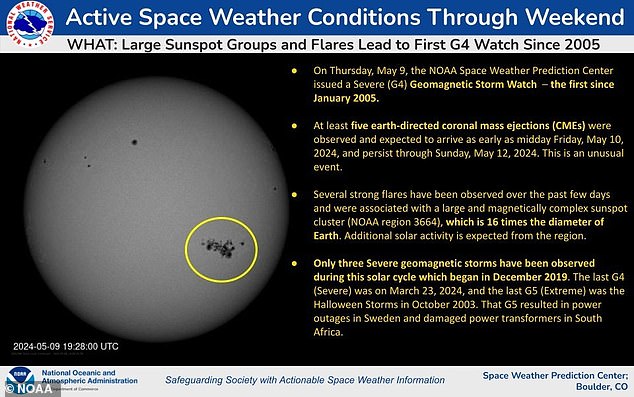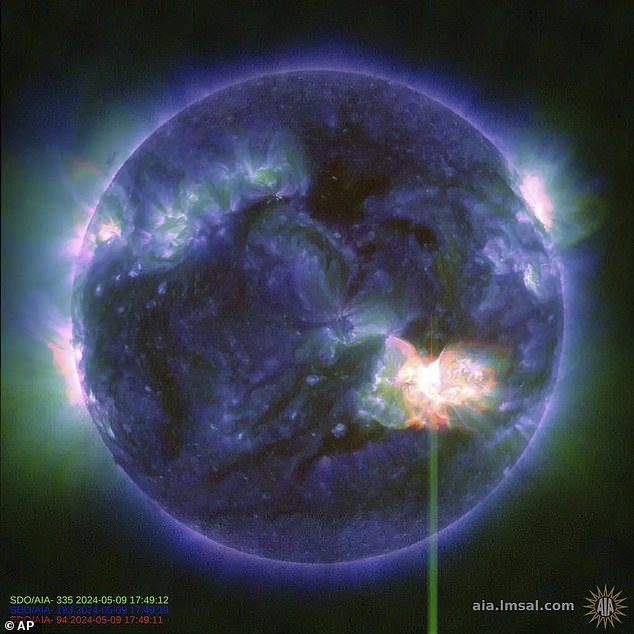NOAA says tonight’s ‘cannibal’ solar storm could be worst in 165 YEARS and cause GPS and power outages – as they reveal exact time it’ll hit
Earth could witness its worst solar storm in 165 years as five streams of plasma released by the sun this week will enter our atmosphere tonight.
The National Oceanic and Atmospheric Administration (NOAA) revealed Friday that the worst-case scenario would be what happened during the 1859 Carrington Event, which set fire to telegraph stations and disrupted communications worldwide.
In our modern society, a geomagnetic storm – a major disruption of the Earth’s magnetosphere – would cause widespread electricity outages, power outages and damage to critical infrastructure.
Scientists have also predicted that three of the five streams, known as coronal mass ejections (CMEs), could combine to create a powerful ‘cannibal CME’.
Data on what’s in store for our planet will likely be captured around 8 p.m. ET, when the blasts of plasma hurtling through space will be a million miles from our planet — and NOAA plans to issue immediate warnings.
This is a developing story… More updates to follow.
At least five streams of plasma are flowing toward Earth, which officials said could unfold as the worst geomagnetic superstorm in history when they impact Friday evening.
‘We expect that we will get one shock after another. We are really breaking down here,” Clinton Wallace, director of NOAA’s Space Weather Prediction Center (SWPC), said during Friday’s media briefing.
While officials are predicting an event one step below Carrington, namely a Level 5 (G5) geomagnetic storm, they are not ruling out that we could end up with an event at the lower end of the same measurement that ranges from G1 to G5.
The cannibal CME is forecast to produce G3 storms, while the other two could reach G4.
“We’re a little concerned because we haven’t seen this in a long time. [which is why] we thought it deserved special attention,” Dahl said.
“We discussed this with FEMA because they need to know, not that we expect a catastrophic collapse.”

NOAA issued a Severe (G4) Geomagnetic Storm Watch late Thursday evening, noting that a large sunspot cluster had produced several moderate to strong solar flares since 5 a.m. ET on Wednesday.

Earth could witness its worst solar storm in 165 years as five streams of plasma released by the sun this week will enter our atmosphere tonight. NASA has released a photo of a solar flare released by the sun on May 9
NOAA issued a Severe (G4) Geomagnetic Storm Watch late Thursday evening, noting that a large sunspot cluster had produced several moderate to strong solar flares since 5 a.m. ET on Wednesday.
Sunspots are cooler areas on the Sun’s surface, caused by massive changes in our star’s magnetic field. Sunspots are often larger than planets and appear dark on the Sun’s surface because they are cooler than other parts – although they are still very hot, around 6,500°F.
